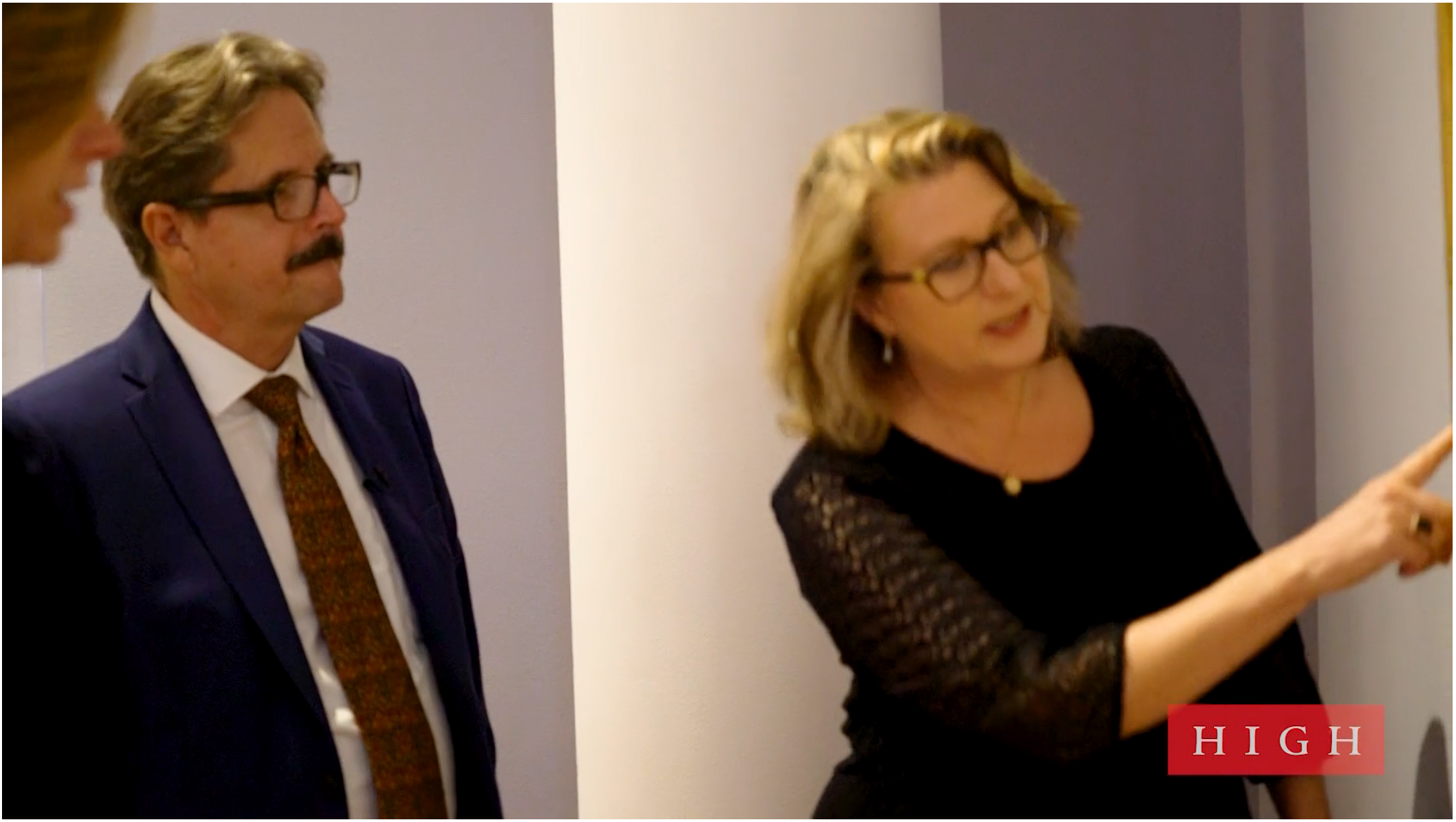
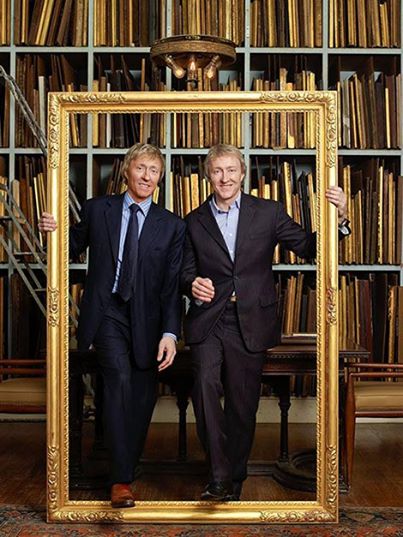
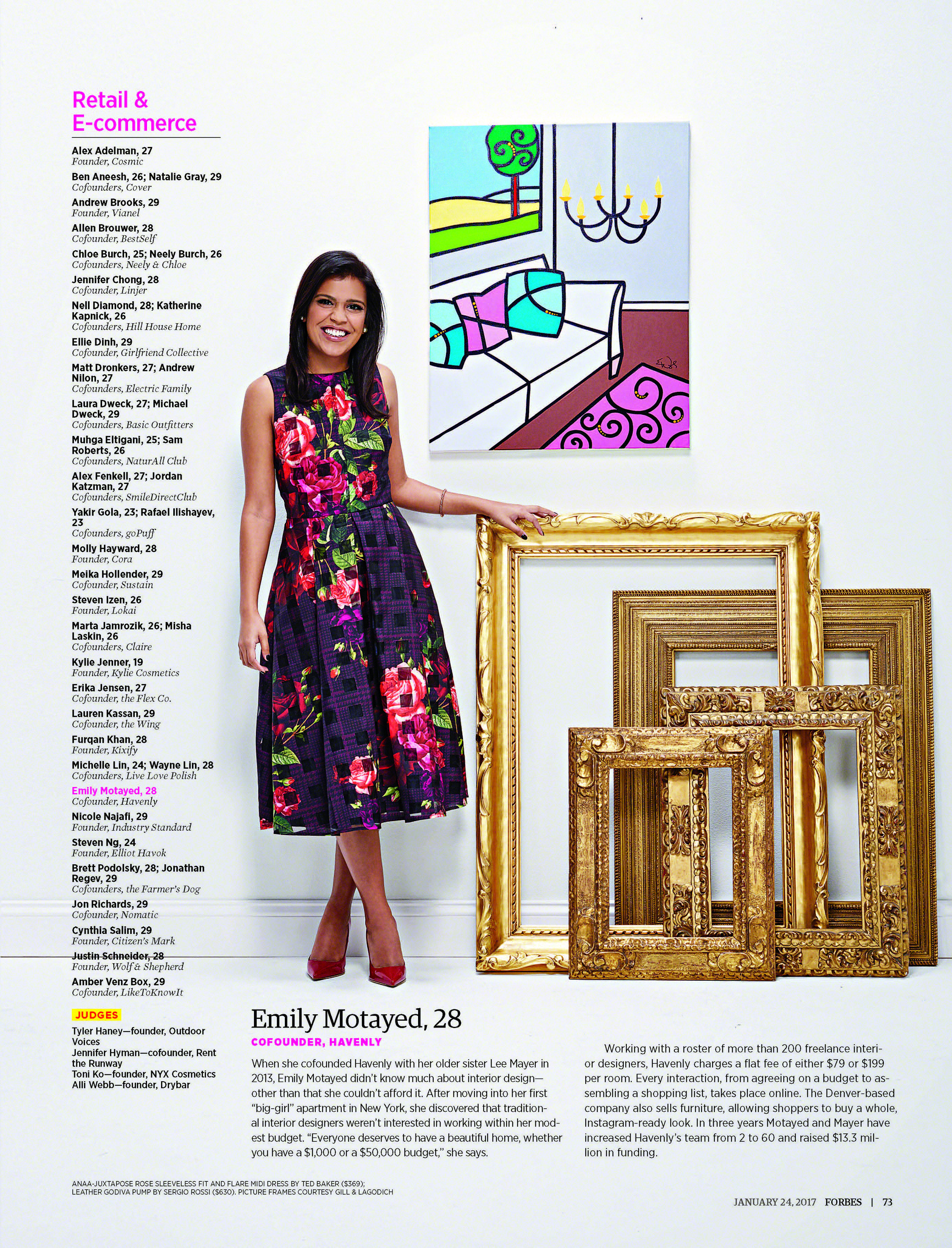
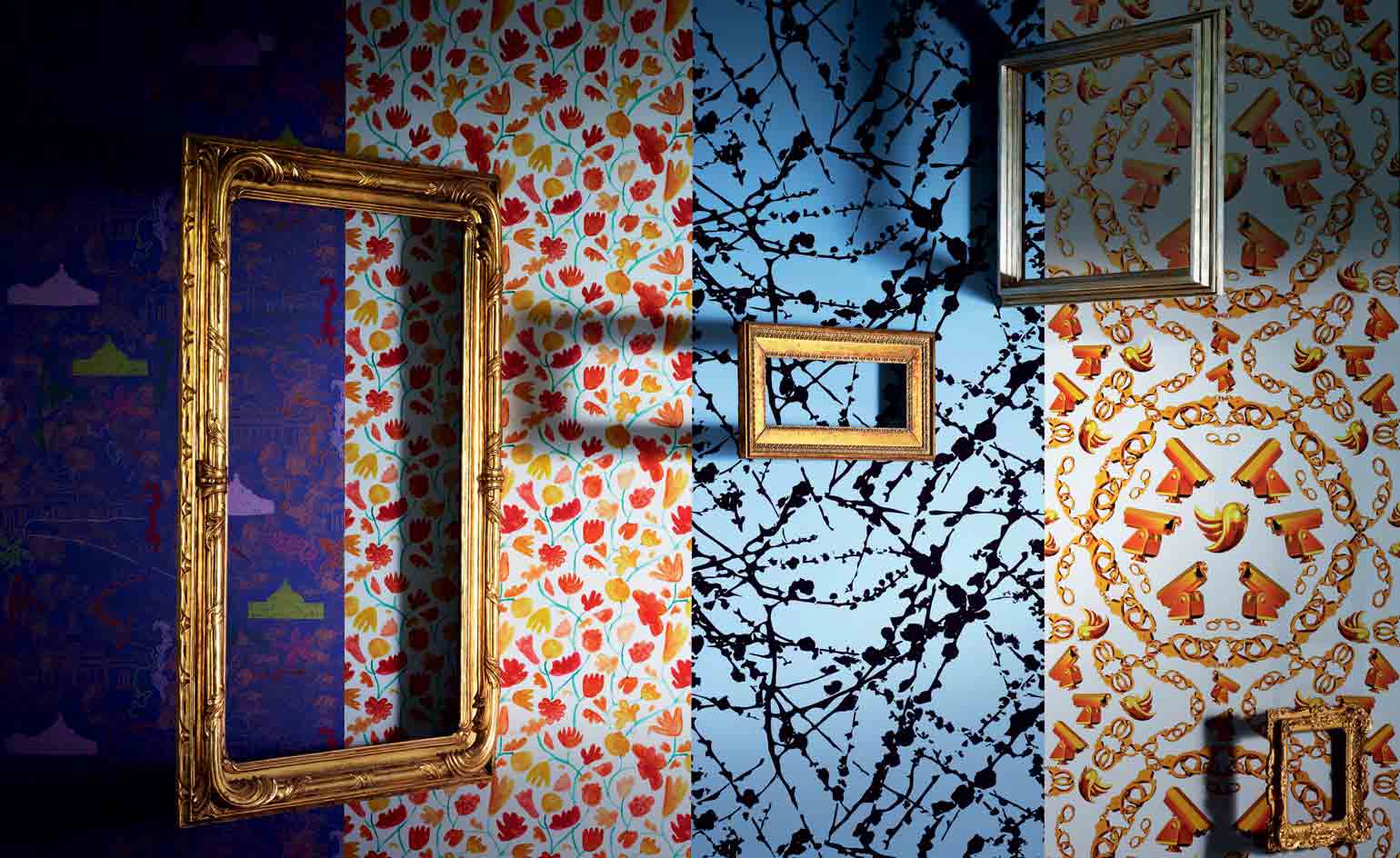
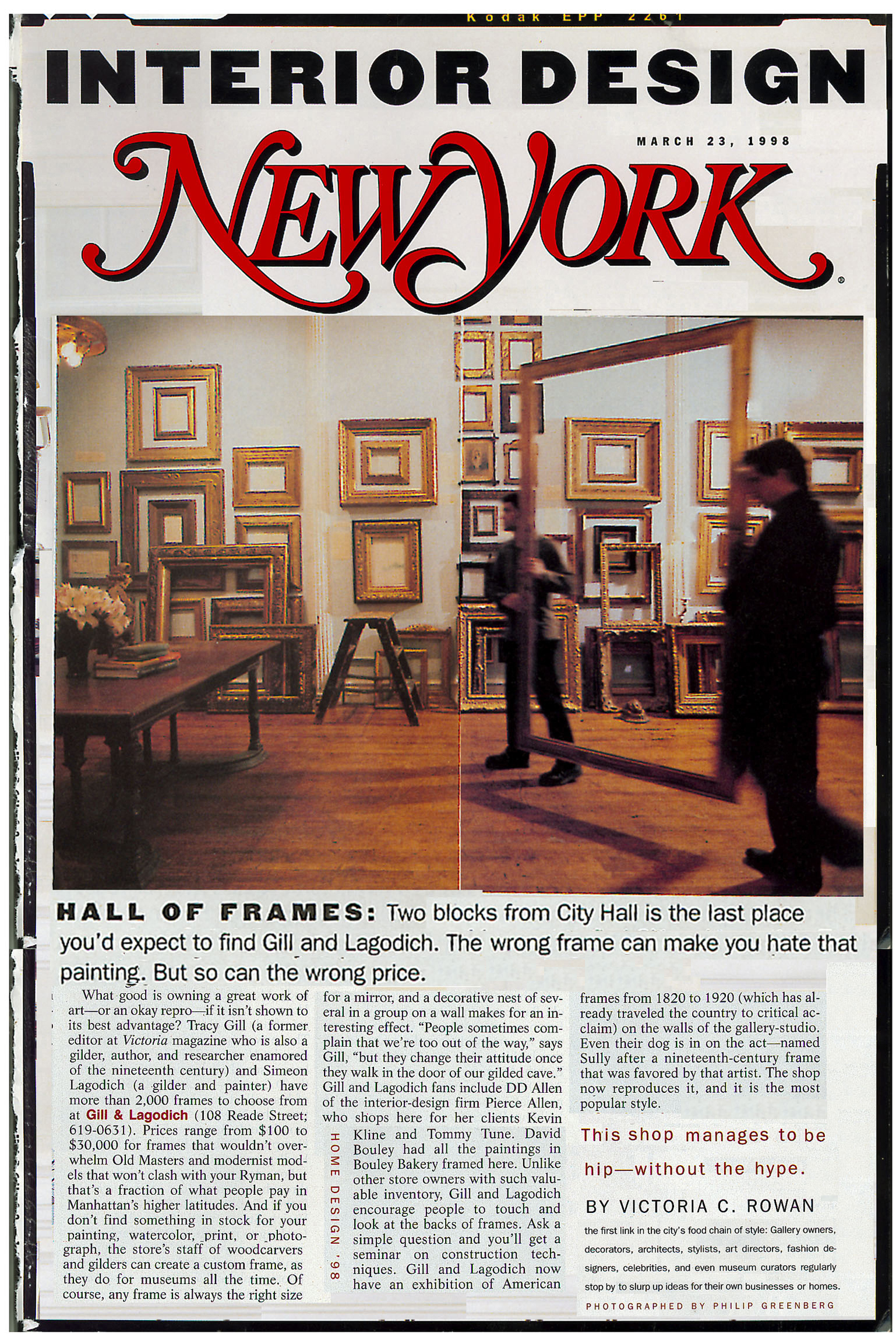

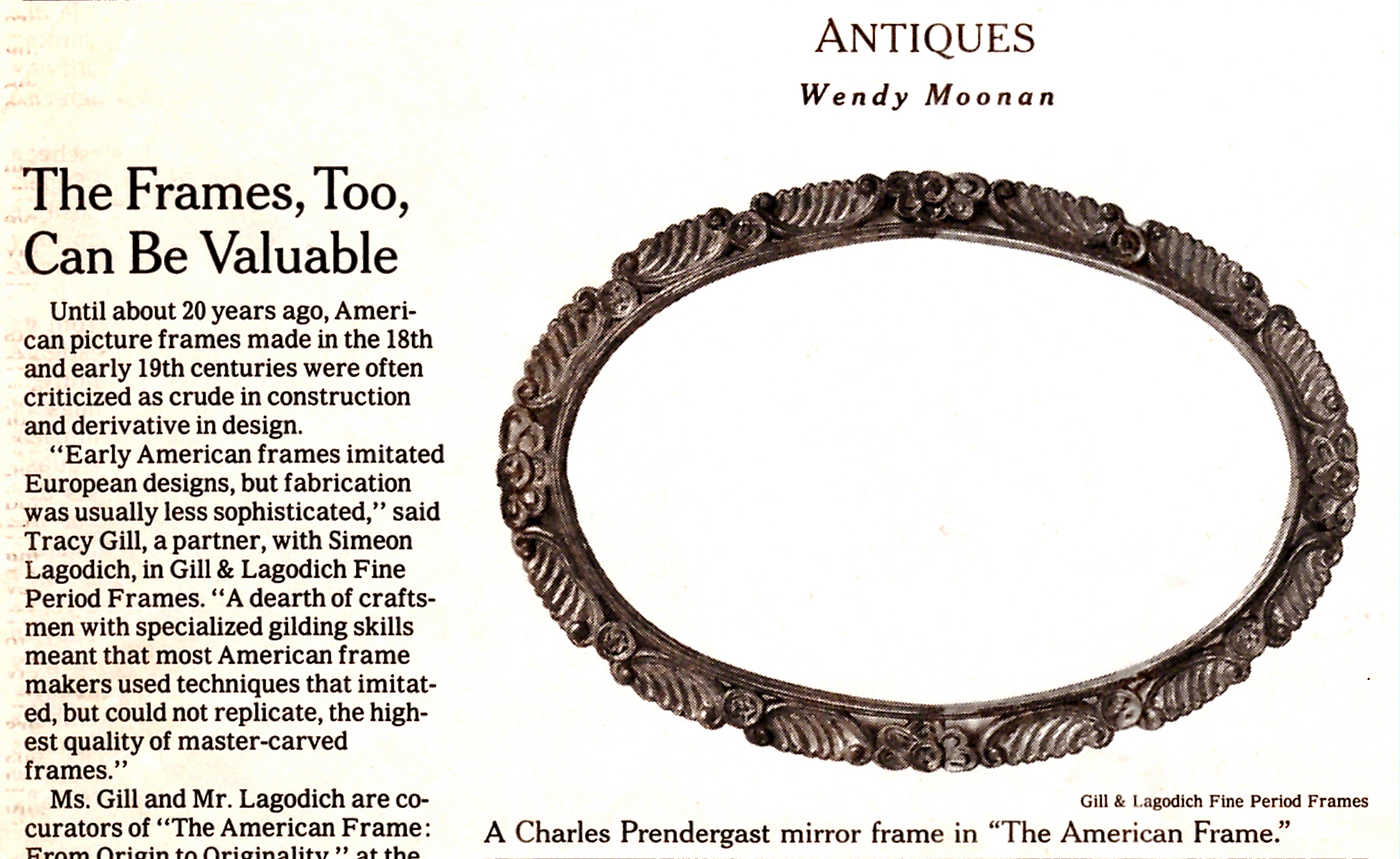
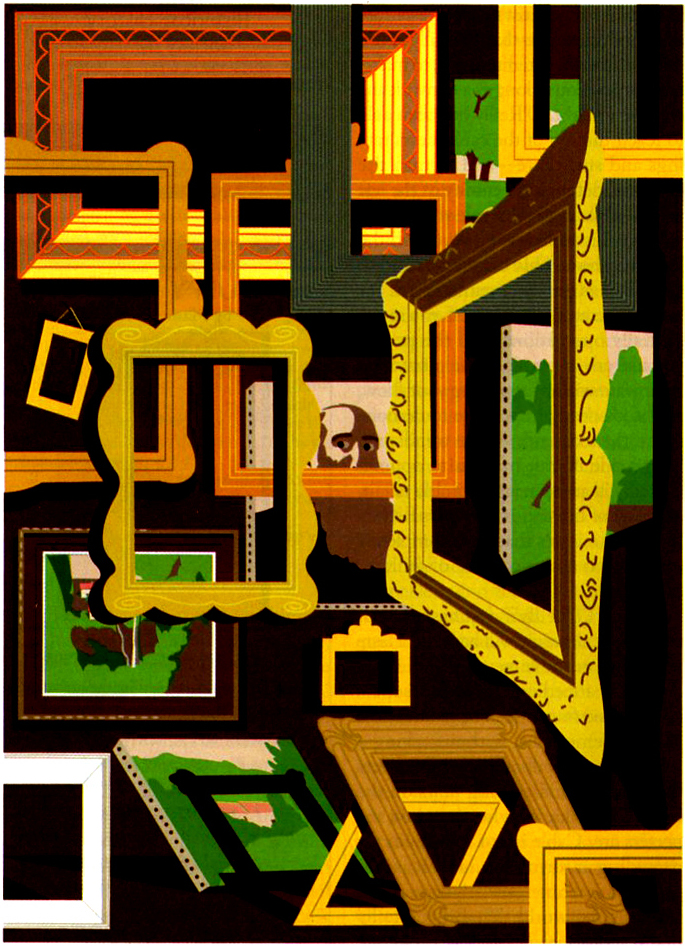
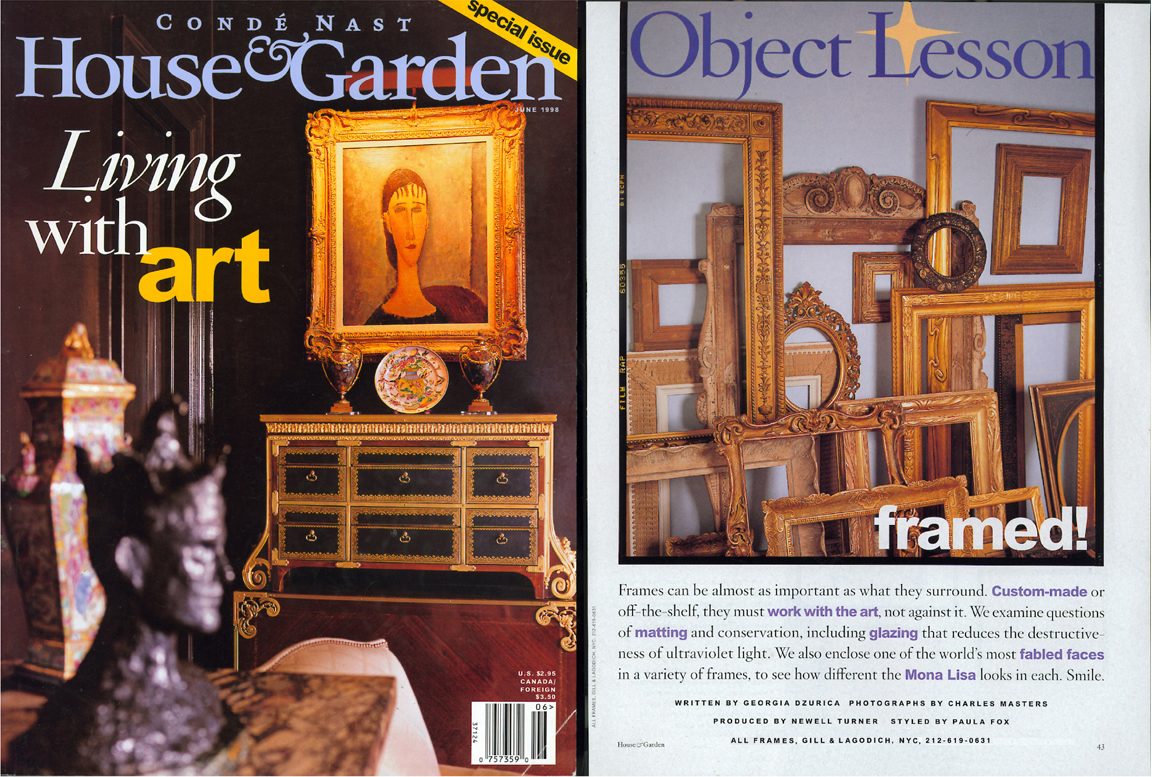
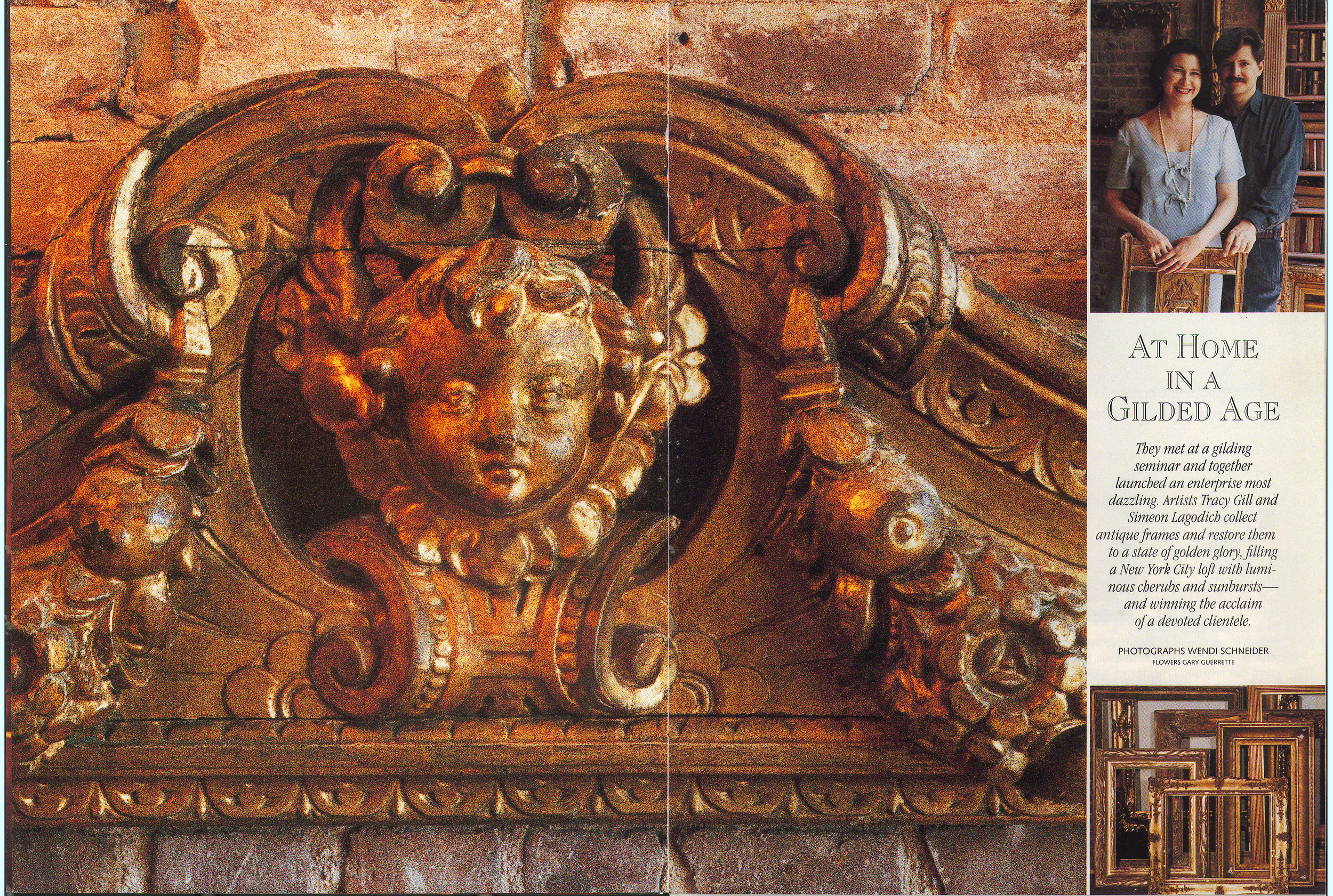
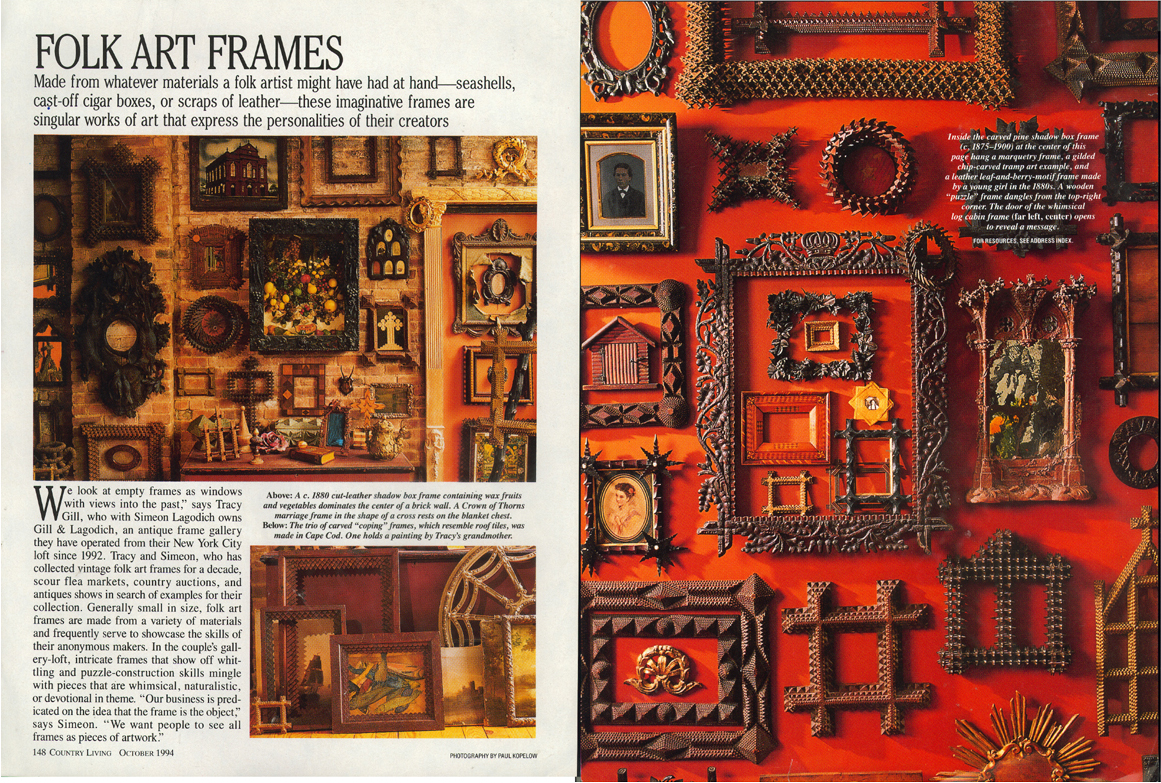

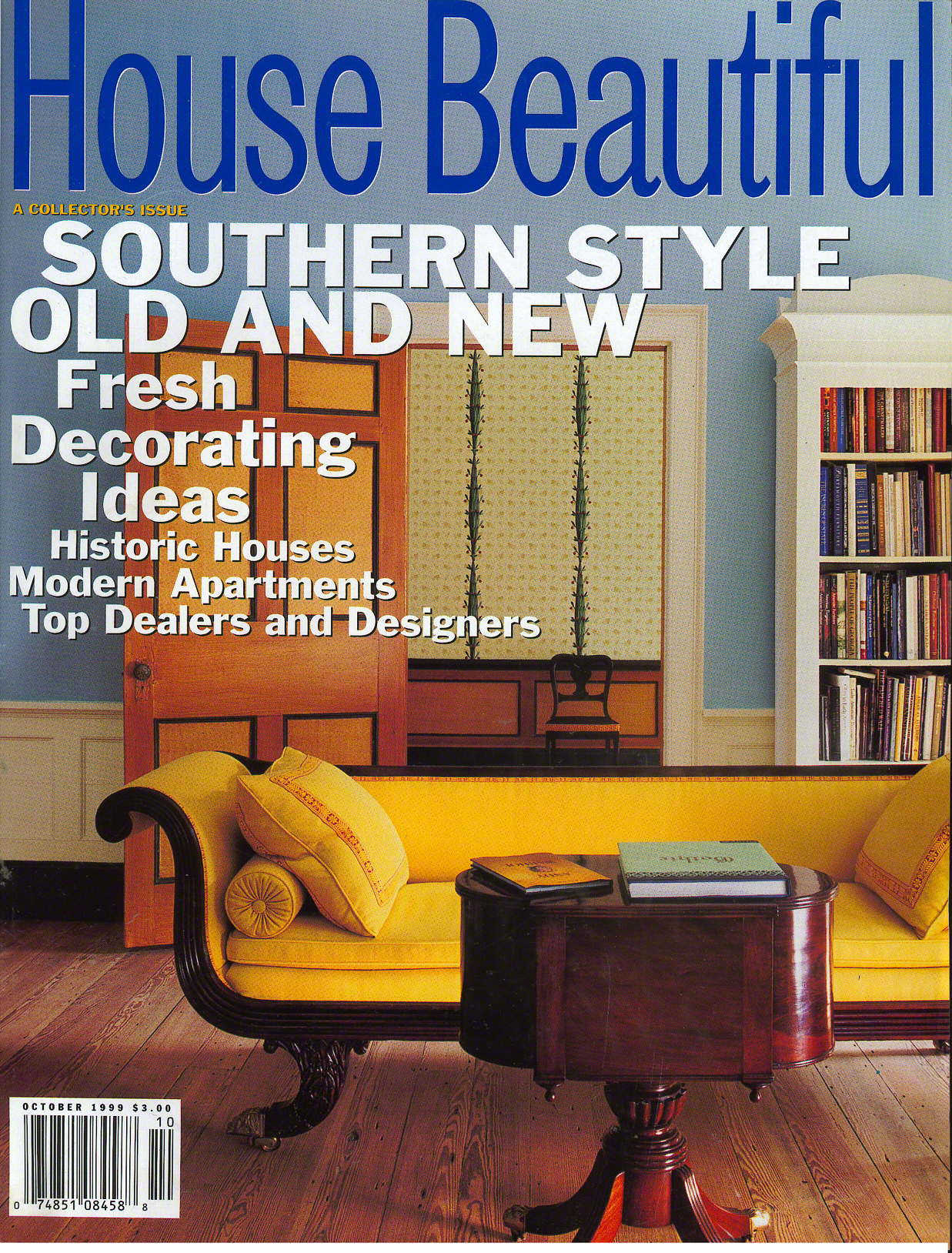
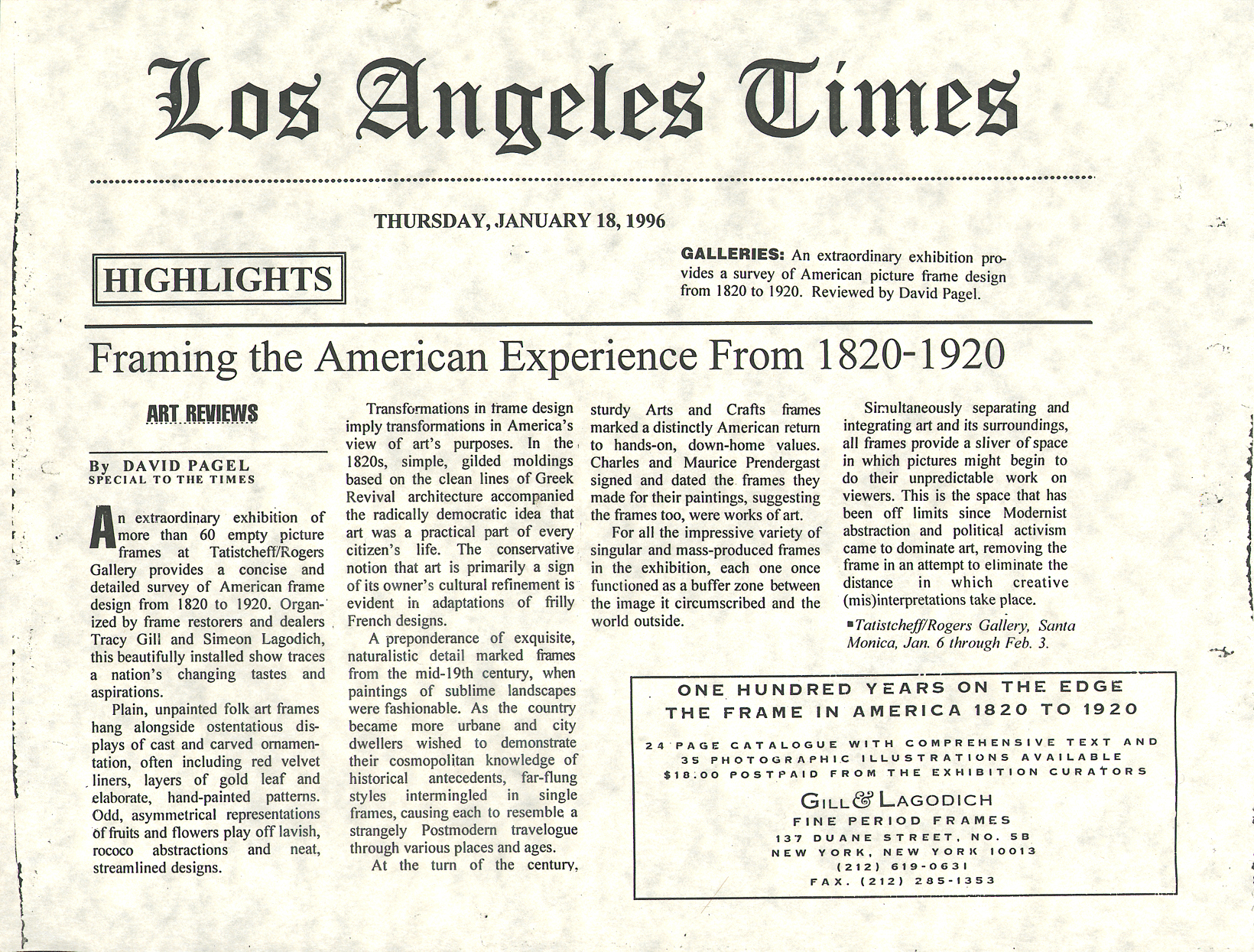

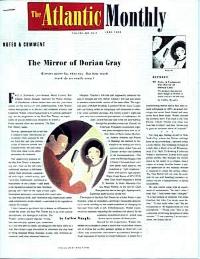
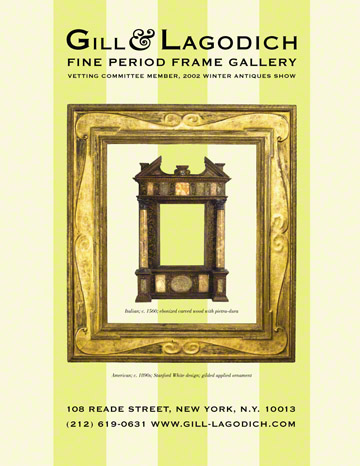
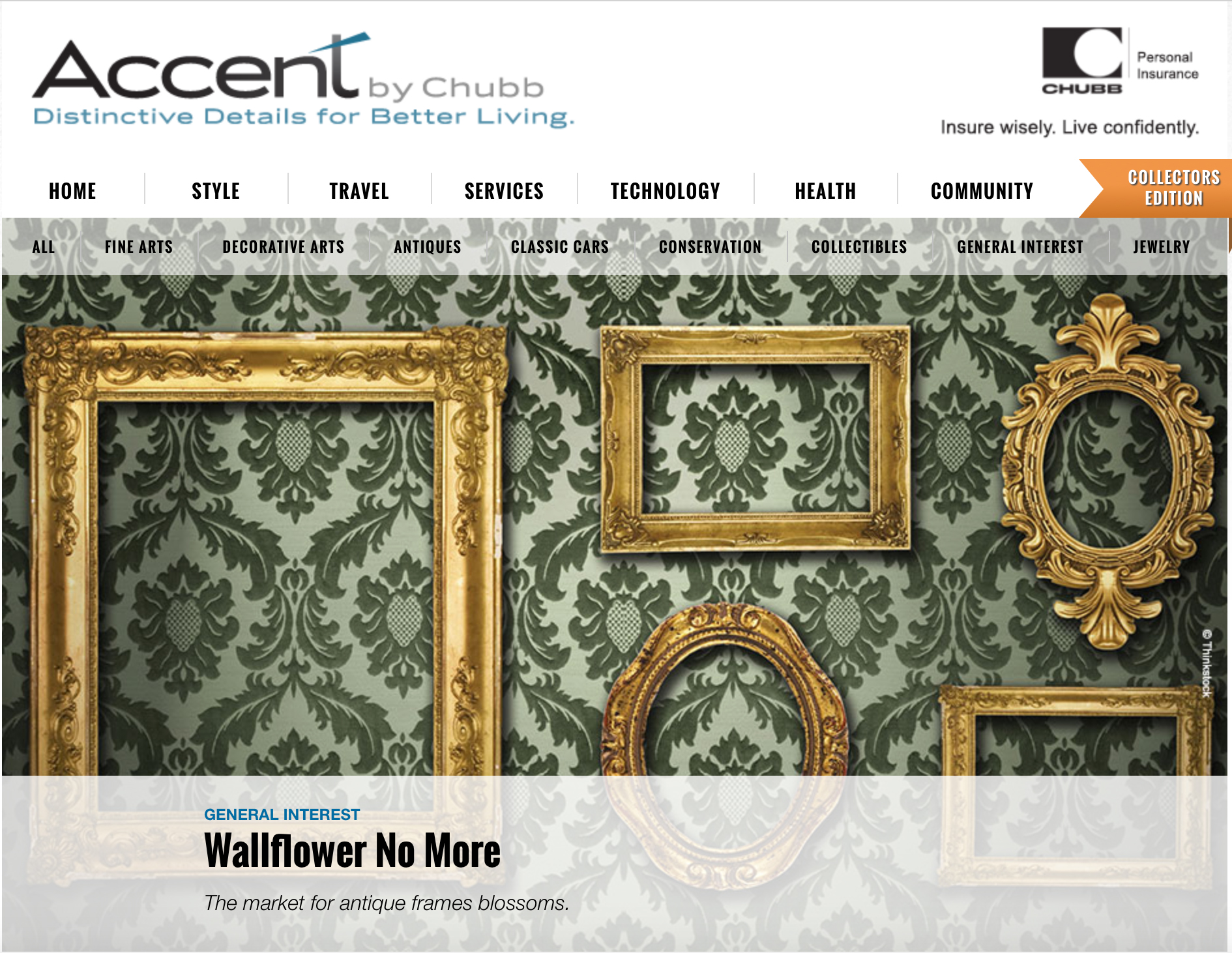
Your Custom Text Here
GILL & LAGODICH ARTICLES AND EDITORIAL MENTIONS INCLUDE American Fine Art Magazine, Architectural Digest, The Magazine Antiques, Art Business News, Art & Antiques, Art+Auction, The Art & Antiques Weekly, Art News, The Atlantic Monthly, Chicago Tribune, Country Living, Fairfield County News, Fine Arts & Connoisseur, Elle Decor, Fine Arts Trader, House Beautiful, HG, House & Garden, Kenosha News, The Leader (Corning), Los Angeles Times, Martha Stewart Living, New York magazine, Orange County Register, Picture Framing Magazine, The New Yorker, The New York Times, The Gilder’s Tip: Society of Gilders, Style 1900, Town & Country, Traditional Home, Tribeca Citizen, The Tribeca Trib, Veranda, Victoria, Vogue, and Wallpaper magazine.
Frame consultants Tracy Gill and Simeon Lagodich in conversation with Stephanie Heydt, Margaret and Terry Stent Curator of American Art at the High Museum, Atlanta, GA. Learn about the project Stephanie undertook to enhance the galleries by pairing American paintings with appropriate antique frames. Working with the High since 2003, Gill & Lagodich have framed over thirty paintings in the museum's collection to date.
MAGAZINE ARTICLE & VIDEO: March 2010 Leigh and Leslie Keno visited with Tracy Gill and Simeon Lagodich to discuss period frames, reproductions, gilding methods, and some of our personal frame favorites.
Source:http://www.traditionalhome.com/antiques_collecting/kenobrothers/beautiful-antique-frames_ss1.html
Leigh and Leslie Keno visit Tracy Gill and Simeon Lagodich at the Gill & Lagodich frame gallery in Manhatan and discuss vintage frames, reproductions, and how to find the best values.
MAY 2015 London's Serpentine Galleries and American textile house, Maharam's collaboration: A collection of 13 patterned wallpapers by seven artists and architects. Frames, all from Gill & Lagodich Gallery, New York Photography: Anthony Cotsifas, Producer: Michael Reynolds
Read more at http://www.wallpaper.com/design/wall-of-fame-serpentine-galleries-and-maharam-deliver-works-of-art-by-the-roll/8858#UT6Ey3zM53757dzC.99
Frames, from left, Circa 1907 American Arts & Crafts painting frame, by Carrig-Rohane Boston Makers; 18th-century French Louis XVI frame; custom-made replica of a 1920s-30s American Modernist frame; 19th-century french shadowbox frame, all from Gill & Lagodich Gallery, New York.
‘Nose/Popcorn – Yellow/Green’ wallpaper by John Baldessari with 17th-century Italian pierced lobate leaf and volute motif frame, from Gill & Lagodich Gallery.
‘Circle Cutter’s Room’ wallpaper by Rosemarie Trockel with 18th-century Italian oval moulding frame; Circa 1740 French Louis XV frame with round opening; 19th-century American Scotia profile frame with applied balls, all from Gill & Lagodich Gallery.
On a typical weekend, the two get up at 3 A.M. to go to flea markets, where they comb for frames to restore. "It's a disease," said Mr. Lagodich, who once covered four states in a day. "But the euphoria from one good day shopping is like going to Atlantic City and hitting it big."
Their shopping finds have displaced their belongings. Virtually all of their 1,700-square-foot loft is devoted to more than 1,000 frames. When Ms. Gill arises, she has to move frames to get to her sock drawer. Only the bathroom is reserved for their paintings. "Thank God, it's got 14-foot-high walls," she said.
Frames inside frames adorn their living-room walls, a gilt miniature hangs over the intercom, and a huge gilt frame even dangles around the television set. "I put it there when I was vacuuming," Ms. Gill said, "and it just kind of stuck."
While not everyone wants to live in what Ms. Gill and Mr. Lagodich call their "Age of Innocence" style, clients who visit them to buy frames or other decorative objects have a firsthand view of what a sumptuous environment frames and other decorative relics from the past can create. Another benefit to visitors is the couple's eagerness to talk about the history of framing and explain the peculiarities of pricing and why two frames from the same period can cost $75 or $2,000.
"A common misconception is that people think they are paying for the gold on the frame," Ms. Gill said, "when in fact the amount of gold in the gold leaf is minimal. The cost of a gilt frame is in the labor."
Ms. Gill, who has taken courses in gilding, and Mr. Lagodich, who is self-taught, are purists when it comes to renovation. Using what might sound like a witch's brew -- dragon's blood and gamboge (resinous substances), rottenstone (limestone dust), garlic and rabbit's-skin glue -- they spend hours rubbing a frame's surface before and after applying gold leaf.
Synthetic ingredients can cut the time in half, but there will be none of it here. "If you don't do every step correctly, then you're not going to get a job that survives," Ms. Gill said.
Mr. Lagodich has spent as long as two weeks on a frame trying to recreate its original patina. "A lot of people mistakenly overclean the frame and lose the original patina," he said. "It's the saddest thing. It's like losing the original oil painting."
Probably the only trick of the trade that is readily accessible to anyone is spit, which can easily clean a small surface without damaging the gold because it contains natural enzymes.
It's surprising what can be discovered at a flea market. Two weeks ago, Mr. Lagodich was dismayed at the prospect of going home empty-handed after a day of flea marketing, so he stopped at the Grand Street market in SoHo. For $10, he bought a carved wooden chair whose frame had turned green and whose seat was so badly sprung it looked like a piece of pop art; good examples of the ornamentation and craftsmanship of a historic period are always of interest.
A week later, the chair had been cleaned and the gilt wooden frame revealed in all its splendor. Mr. Lagodich said it is a perfect example of the Aesthetic Movement of the second half of the 19th century, almost certainly the work of the Herter Brothers, whose pieces collect tens of thousands of dollars at auction.
Although Ms. Gill and Mr. Lagodich enjoy the stream of objects that pass through their hands, they are holding onto a collection of about 100 items, including an original Louis XIV picture frame and a casing for a Black Forest cuckoo clock. They estimate that several pieces are worth more than $20,000 each.
Surprisingly, their tastes differ. While Ms. Gill's passion is for miniatures, Mr. Lagodich's is for 19th- and 20th-century American folk-art frames. "These frames are not worth very much at auction," he said, "but I like the madness attached to them. They were done to show off whittling and puzzle-construction skills."
As for their shared passion for gilding, the two are not living totally in the past. For four years, Mr. Lagodich has worked as a consultant to the fashion designer Geoffrey Beene, assisting directly in developing his new line of "objects of desire" furniture.
And Ms. Gill has developed a line of gilded carpets, taking roughly a week from start to finish. She paints a design onto canvas, gilding over it with metal leaf (a substitute for gold leaf used in interior decoration and architecture), then seals the design to insure that it is waterproof.
"They are an extension of the floor canvases used in the colonial days," she said.
In her current carpet design, copied from a vibrantly colored Turkish wedding rug, the center flower is formed from 24-karat gold. "I couldn't resist," she said. "Gold is unlike other materials. They reflect light, but gold contains it."
Gill & Lagodich … is open by appointment only: (212) 619-0631.
The Mirror of Dorian Gray "Mirrors never lie, they say. But how much truth do we really want?" "...the notion of transparency is fast moving from the metaphoric to the literal to the surreal. Last year the Gill & Lagodich gallery, in New York, mounted an exhibit devoted to picture frames, titled "One Hundred Years on the Edge." The frames were hung empty, creating seductive windows onto a void." — Culllen Murphy, June 1999
The Atlantic Monthly; June 1999; The Mirror of Dorian Gray - 99.06; Volume 283, No. 6; page 22-26.
http://www.theatlantic.com/magazine/archive/1999/06/the-mirror-of-dorian-gray/377630/
WALLFLOWER NO MORE
The Market For Antique Frames Blossoms
By Alan Montgomery, November 2014
As any true connoisseur knows, the perfect frame is a vital element for any picture. In fact, the world of framing is much more interesting and complex than most people might imagine. Perhaps the most little-known, esoteric sector of this world is the market for antique picture frames, a small but blossoming area in which enormous amounts of money sometimes change hands for the finest, rarest examples.
Having worked for a number of years in the art world, I have often seen important paintings—canvases which are both beautiful and valuable—stuck in the most unsuitable, sometimes downright ugly frames. Some owners of contemporary pieces which have recently shot up in value may have an excuse: that cheap clip-frame on their Banksy print may have been perfectly appropriate when they bought the work for next to nothing, but not so much now that it is worth something in the region of $10,000. Such frames not only do little for the work of art, they can also lead to conservation issues, or even serious damage. I have seen delicate canvases barely held into their frames with a couple of rusty nails, and wonderful works of art almost ruined by their unattractive surround.
Placing your picture in a different frame is a great way of bringing something personal to it, of stamping it with your own taste, and can often totally rejuvenate a long-neglected painting. Adding a handsome antique frame is perhaps the pinnacle of this process. When it comes to buying antique frames, the cheapest place to start is probably an auction, be it at a local auction house, or online. While a couple of international auctioneers, namely Sotheby's and Bonhams, sell collections from time to time, their interest in the antique frames market is limited. Some smaller companies, like Roseberry’s in the suburbs of London, sell fairly large quantities of frames in their regular antique auctions, but these events are generally well-attended by picture dealers who snap up any useful frames and are not afraid to pay top prices. The larger online auction sites such as eBay, however, can be happy hunting grounds for amateur frame buyers, and it is not unusual to bag a bargain if you know what you are looking for; search for picture frames which have been converted into mirrors too; these can sometimes slip under the radar of other bidders. As ever, beware of mis-catalogued items, steer clear of anything in poor condition, and do a bit of research before you bid.
Ultimately, successful bidding and buying online require some knowledge, at least enough to recognize the authentic antique and avoid the poor quality copy, or to spot the all-important difference between original gilding and later gold paint. And although buying at auction is almost always the least expensive option, it can also be the most frustrating—after all, given the limited number of frames that go through sale, the chances of one appearing which not only fits, but also suits your picture can be slim. You will also need to use your imagination when buying online, and hope that the end match of picture and frame lives up to your expectations!
For those with a larger budget, a visit to an antique frame dealer can be a much more satisfying and rewarding experience. Most are located in major cities like London and New York, but some smaller operations can be found elsewhere in the U.S and Europe, particularly in Italy where antique frames are widely appreciated. Like anything, the quality and costs of the frames offered by these dealers can vary greatly, from the relatively affordable to the jaw-droppingly expensive. At one end of the spectrum, dealers like Lacy Gallery in London’s Westbourne Grove or the Charles Daggett Gallery in nearby Notting Hill, offer an informal, friendly but knowledgeable service, both with stores packed full of beautiful antique frames. At the other end, dealers like Lowy in New York and Arnold Wiggins & Sons in London, both up and running for close on a century, stock only the finest antique frames that money can buy. These appointment-only establishments are patronised by top collectors and museums, and work with clients around the world. Somewhere in the middle are Gill & Lagodich, specialists in American frames, and Rollo Whately in London’s smart Mayfair, both of which provide a wide array of frames at a range of prices.
So once you have made the decision to splash out on an antique frame for your prized painting, what can you expect from the dealers? Their main benefit in comparison to buying at auction is the large number of frames that they always keep in stock, which mean that they should be able to offer you a variety of appropriate frames for your picture. Any decent dealer will ask for details of the work needing framing, and make an appointment for you to bring it in if possible; placing your picture in a potential frame is, after all, the best way to make the final decision. While the chances of finding a frame that fits like a glove are almost non-existent, these dealers will be able to offer an alteration service to cut down, or sometimes even extend a frame to size. And since these guys are dealing with the Rolls-Royce of frames, any alteration will be done by skilled craftsmen, and will be as much as invisible to the naked eye. As for which frame looks good and is appropriate to your work of art, well that is very much up to you. Any good dealer will, however, be able to offer their advice, and show you a selection of frames which give diverse end results. For older paintings, the choice is fairly straightforward—a 16th-century Italian painting will look best in a frame from the same locality and period, as will an 18th-century English portrait. Some artists and styles are traditionally housed in specific types of frames; the habit of the (often penniless) young Impressionists for buying distressed 18th-century French frames at local flea markets means that such frames, which today are rare and much sought-after, are still often selected to hold these now valuable canvases. Picasso paintings, meanwhile, are often placed in 17th-century Spanish frames more usually found on the works of Velasquez or Murillo, imbuing them with an added gravitas and effectively positioning them as ‘modern masters.’ With more contemporary pictures, the possibilities are almost endless—I have seen a Glenn Brown painting placed in an exquisite Dutch 17th-century ebony frame, and an abstract Lucio Fontana canvas hung in a grand Italian ‘cassetta’ frame from the early 1600s. No matter how anachronistic such a match may seem, the elegance and weight that can emanate from a tastefully framed picture can often be astounding. Be warned; these beautiful antique frames, many of which are delicately hand-carved and gilded works of art in their own right, do not come cheap. At one of the less expensive dealers, you may be able to pick up something small from $150 or so, but for the fine and rare museum-quality examples mentioned above, you may be looking at anything between $10,000 and $100,000, and sometimes even more. But while 18th-century collectors were known to spend more on the frames than on the pictures that they housed, nowadays it seems reasonable to only spend what your painting merits. If an antique frame cannot be found, or your budget just will not stretch to it, many of these dealers also offer a service for producing top-quality hand-made reproductions modelled on the antique originals. And although these could hardly be described as cheap, considering the amount of work that goes into each frame and the quality of the product, it should be money well spent.
For now, the antique picture frame remains a rather neglected sector of the art and antique market. While a select few collectors and curators are aware of the benefits of choosing that perfect frame, many still see it as a needless expense. Good quality frames may cost more, but the results can often be astounding. For those wanting to find out more, books such as Frameworks: Form, Function and Ornament in European Frames by London dealer Paul Mitchell or New York-based Eli Wilner’s The Gilded Edge: Art of the Frame both include numerous illustrations and lots of information on the history and development of the frame. Next time you are at an art museum, take a look past the canvas and check out the often elaborate surround. But beware; the world of antique frames is a fascinatingly enticing one, and the results that can be gained from spending the extra money on these frames are often breathtaking. Once you delve in, the chances are you will never look back.
See more at: http://accent.chubb.com/wallflower-no-more#sthash.QlFrcALT.dpuf
An Italian 16th-century ebonised and parcel gilt cassetta frame.